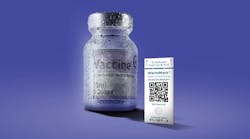If I ever become a societal recluse, Amazon Prime is partially to blame. And I can’t even be mad at them for this, because frankly Amazon Prime is the best $99 I’ve spent in a long time. We live in a world where everything from bubble gum to bicycles can arrive on our doorsteps in just two days — and that’s pretty impressive. Imagine my unbridled glee when presented with the prospect that this turnaround time could be reduced to just 30 minutes.
In December 2013, Amazon released a video demonstrating its future “Prime Air” delivery service. The goal of this new delivery system is to get packages from the warehouse and into customers’ hands in 30 minutes or less using unmanned aerial vehicles — a/k/a drones.
The potential and limitations of drones continues to be a widely discussed tech topic. In the pharma sphere, startup companies have proposed delivering non-prescription and prescription pharmaceuticals to sick patients via drone, eliminating the need to leave the house when you are feeling under the weather. The U.S. FDA, no doubt as part of the agency’s overall efforts to better leverage modern technology, has also made mention of getting in on the unmanned aerial vehicles action.
Specifically, the FDA has expressed interest in exploring the feasibility of using drones to conduct cGMP inspections of drug and device facilities. If this idea came to fruition, it could have major implications for the drug industry. Airborne drones would mean that hard-to-access areas, such as rooftops and overall land area inspections, could be more easily surveyed by FDA auditors.
Unfortunately for Amazon, the Federal Aviation Administration recently released its proposed requirements for unmanned commercial aircraft, and the regs don’t allow for the use of delivery drones. The new FAA rules would, however, allow for commercial use of drones, meaning drones could be used for things such as inspecting a bridge or surveying land, which also means the FDA could move forward with its drone facility inspection proposal.
The FAA rules aren’t finalized and are still open to commentary, but the agency’s attention to the issue of unmanned aerial vehicles indicates that the technology is a lot more than just a nifty futuristic toy. There is real potential for the technology to shape modern day industry, pharma included. Not to mention that the Association for Unmanned Vehicle Systems International claims the first three years of drone integration in the U.S. will create more than 70,000 jobs and bring an economic impact of $13.6 billion, a pretty decent economic boost.
Fear not those-of-us-who-dream-of-never-running-out-of-toilet-paper-again: Amazon has vowed not to give up on its goals of Amazon Prime Air. It seems that they know a cool future is just hovering right within our reach.





